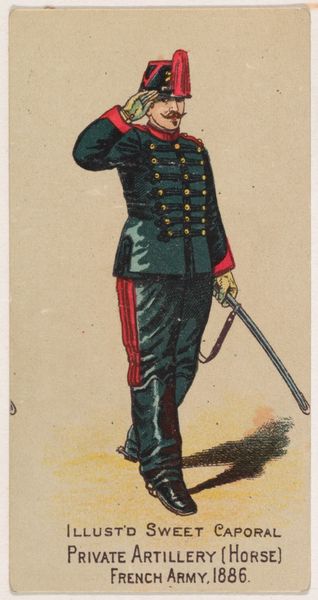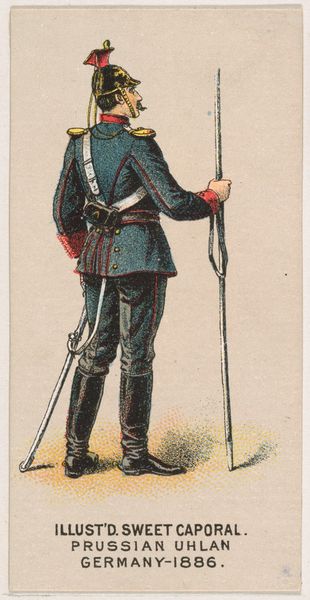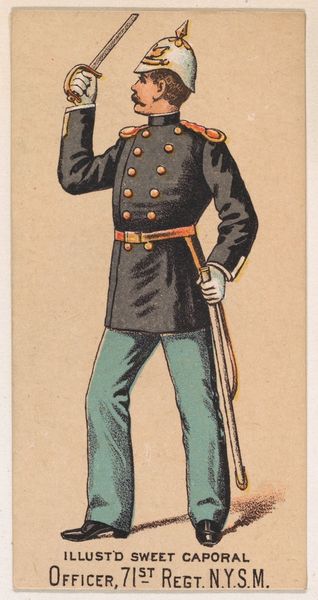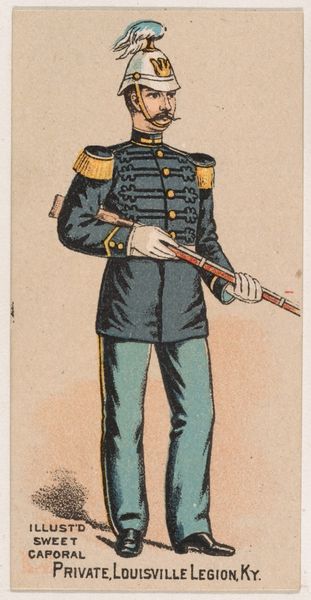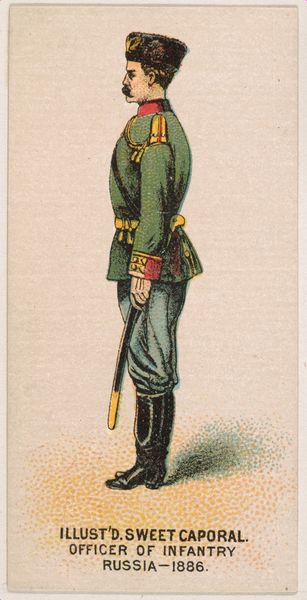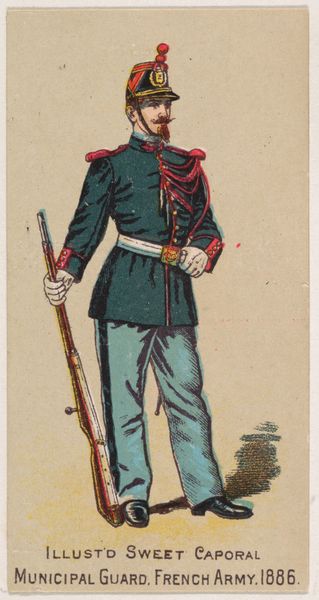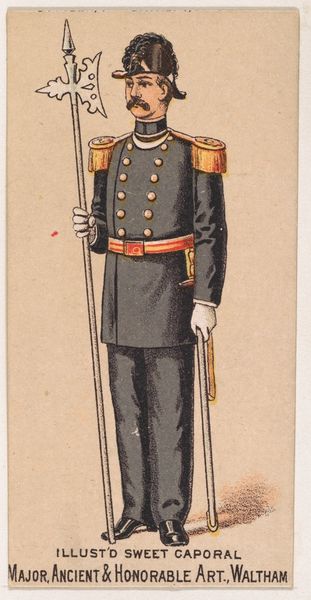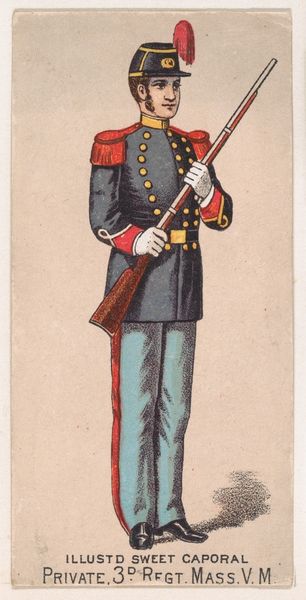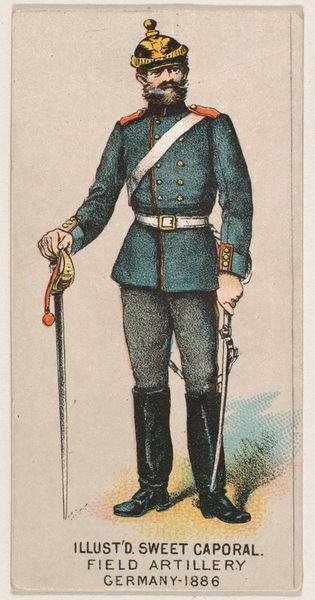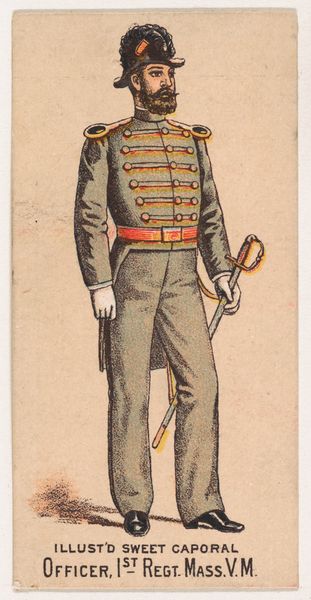
4th Battalion, Imperial Chasseurs, Russia, from the Military Series (N224) issued by Kinney Tobacco Company to promote Sweet Caporal Cigarettes 1888
0:00
0:00
drawing, print
#
drawing
# print
#
caricature
#
caricature
#
soldier
#
men
#
history-painting
Dimensions: Sheet: 2 3/4 × 1 1/2 in. (7 × 3.8 cm)
Copyright: Public Domain
Editor: This is "4th Battalion, Imperial Chasseurs, Russia" a print from 1888 by the Kinney Brothers Tobacco Company. I’m immediately struck by how it idealizes this soldier. The colors are so vibrant. What can we say about why this image was produced? Curator: Well, its context as a tobacco card is crucial. It functioned as both collectible and advertisement. Think about the rise of mass media in the late 19th century, and how products like cigarettes became linked to idealized images of masculinity and imperial power. It taps into the popular imagination of Russia at the time, which often exoticized or fetishized it. What do you think this imagery says about cultural perceptions? Editor: I guess it presents a very specific and probably inaccurate vision. It feels like propaganda, even on a small scale. Curator: Precisely. Consider the Chasseurs themselves: this idealized representation of Russian Imperial soldiers is tied to actual military actions, which involved suppressing dissent and enforcing imperial control. Whose stories are missing in this depiction? Editor: Definitely the perspectives of those who were colonized or oppressed by the Russian Empire. It only shows one side. Curator: Exactly. It highlights the selective nature of historical representation. By acknowledging this, can we unpack how such images shape our understanding of power, identity, and historical events? Editor: Absolutely! Recognizing its origin allows a fuller understanding that extends beyond the picture itself. This was not produced as history painting in the conventional sense. It omits other cultural factors. Thank you for clarifying the context, it changes how I will perceive similar works going forward. Curator: Indeed. And reflecting on the way these images worked then might help us think critically about similar tactics being employed today.
Comments
No comments
Be the first to comment and join the conversation on the ultimate creative platform.

